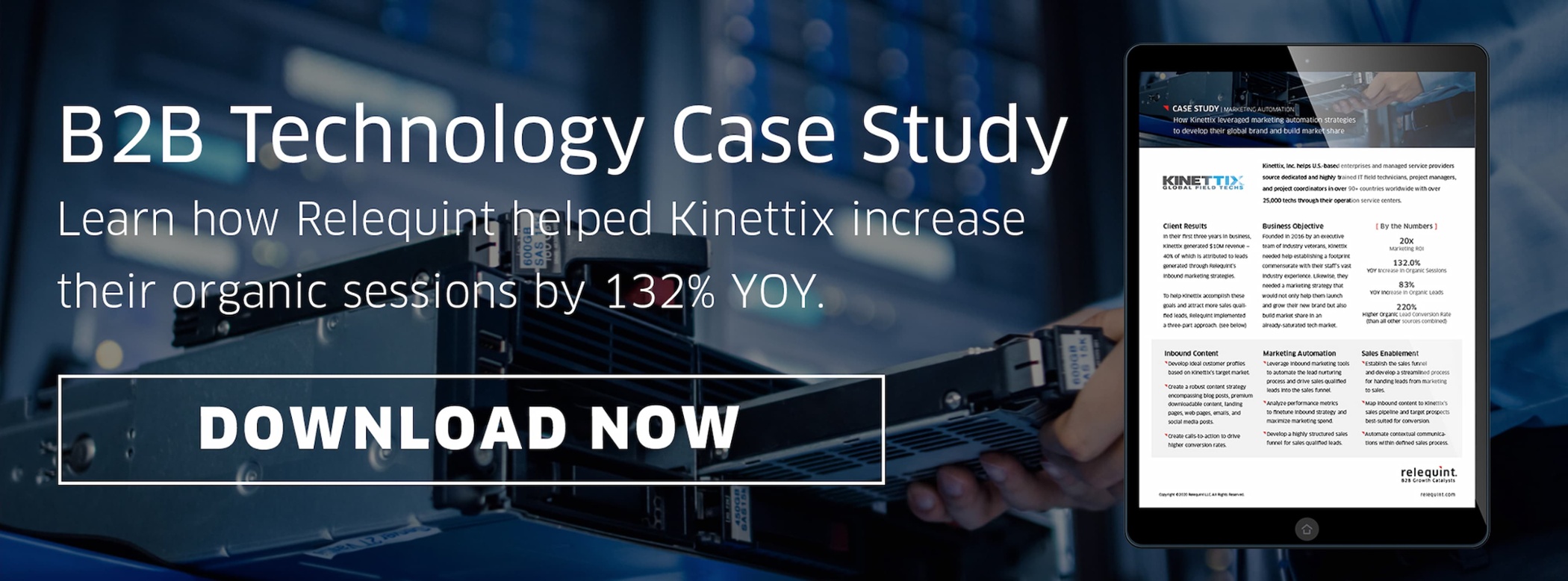 Marketing automation has paved the way for more efficient, targeted marketing. Its ability to generate sales qualified leads and promote engagement makes it a vital tool for many B2B industries — especially the technology sector.
Marketing automation has paved the way for more efficient, targeted marketing. Its ability to generate sales qualified leads and promote engagement makes it a vital tool for many B2B industries — especially the technology sector.
For marketing automation to be effective and increase ROI, however, businesses must not fall prey to some of the common pitfalls that can derail the tool. If your B2B technology company has recently added automation to your marketing strategy, then avoid these common mistakes.
3 Common Marketing Automation Mistakes
1. Choosing Quantity Over Quality
The goal of marketing is to connect with your target audience and prompt them to interact with your business, eventually converting them into a qualified lead. While you need to stay in front of them, don’t use marketing automation to send a multitude of irrelevant messages. If you send prospects emails and newsletters on every topic that you have, they will likely feel overloaded. Likewise, they may feel you don’t understand their unique problem and are more likely to disengage.
Instead, look at each prospect’s behavior and leverage marketing automation tools to interact with them in ways that correspond with their stage in the buyer’s journey. For example, have they recently requested a consultation via your site? Try setting up a workflow that automatically sends them a case study after they’ve spoken with a representative. This content will reinforce the discussion they had during the consultation and further demonstrate your B2B technology company’s expertise.
Remember: relevance is key — and marketing automation allows you to send the right message to the right person at the right time.
2. Failing to Integrate With Your CRM
Marketing automation tools like HubSpot, Pardot, and Marketo have the ability to integrate with your customer relationship management (CRM) software. Leveraging this feature is key to identifying your target audience, crafting personalized messages, and increasing marketing ROI.
Your CRM should be the backbone of your marketing automation strategy. By integrating the tool with your contact database, you can easily track prospect behavior. For example, you can see the first time an individual engaged with your site all the way through when they downloaded their first whitepaper or filled out a contact form. Then, you can leverage marketing automation to send them relevant emails, case studies, and other assets that address their pain points. You can also use the tool to score the prospect based on their engagement.
Once you’ve qualified the prospect as a lead, you can create automated workflows that pass this information onto sales, allowing your team to have more personalized and productive conversations with potential customers.
3. Not Monitoring Performance
Vanity metrics are one of the best ways to gauge whether or not your B2B technology company’s content is effective and engaging. For example, when it comes to email marketing, you want prospects to open the email, read it, and then click through to engage with your company website. The best way to accomplish this goal is by providing them with content that makes them want to investigate further.
So, how can you judge which content is working and which is falling short? Use your marketing automation tool to analyze performance metrics. There are plenty of email benchmarks you can track, but open rates and click-through rates are among the most useful.
If your metrics aren't where you want them to be, it may be time to reshape your strategy. When certain emails are getting significantly higher open and click-through rates, it may be time to delve deeper into those topics for those specific leads. All the while, your marketing automation software will continue to track performance and automatically send messages through “hands-off” drip campaigns.
By avoiding these common mistakes, you can make sure marketing automation is working for you — not against you.
Are you interested in learning more about how marketing automation can benefit your B2B technology company? Download our case study to see how the tool helped one of our clients achieve 20x ROI. ![]()







 By
By 
